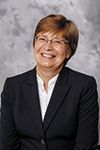The Need for Improvements in Ultratrace Analysis for Biological and Environmental Analysis
Special Issues
Susan Olesik

Analytical chemists continue to develop methods for ultratrace-level analyses that are used by practitioners in areas such as environmental, human health studies, and process technology. However, questions continue to arise about whether the current methods are adequate. This article describes global challenges that point to the need for significant disruptive technology in analytical chemistry.
Endocrine disruptors either mimic or block the production of naturally occurring hormones. Compounds known to be endocrine disruptors include parabens, triclosan, polychlorinated biphenyls, bisphenol A, dioxin, flame retardants, plasticizers, and some pharmaceuticals. Adverse neurological, developmental, and reproductive defects occur in both humans and wildlife as a result of endocrine disruptors. For many of these compounds, the minimum concentration level that will not affect the endocrine systems is not yet known. Mixtures of endocrine disruptors or mixtures with other compounds at ultratrace levels may be implicated in the actual endocrine disruption (1).
Similarly, oxidative stress on humans and wildlife because of exposure to ultratrace levels of pollutants is also of significant concern. Oxidative stress is suspected in neurodegenerative diseases such as Alzheimer’s disease, Parkinson’s disease, and multiple sclerosis. Ecotoxicity in the form of oxidative stress is also a rising concern. Increasing evidence shows that very low levels of compounds, or perhaps mixtures of low levels of different compounds, may be causing oxidative stress conditions in biota. Escher and colleagues showed that 99.9% of the observed chemically induced oxidative stress was because of unknown compounds or combinations of these compounds (2). In other words, less than 0.1% of the measured oxidative stress was because of known measured compounds when more than 269 compounds were studied. Solid-phase microextraction (SPME)−ultrahigh-pressure liquid chromatography−tandem mass spectrometry (UHPLC−MS/MS) analyses are typical for these studies, but clearly the detection limits are not low enough.
Similarly, in human health studies and analyses of molecules involved in human biology, scientists are moving away from monitoring single biomarkers to multiplex biomarkers or comprehensive molecular profiling (3). Increasingly, ultratrace levels of compounds in mixtures of biologically relevant analytes with large ranges of concentration seem important in controlling significant biological processes (4).
Current analytical devices are not meeting all of the needs for ultratrace-level detection as described above. We must develop new means to lower the detection limits of organic and biological compounds. The extent of the enhancement needed is unknown at this point. Methods with increased selectivity are also required for many of these complex analyses. Clearly, further improvements in preconcentration capabilities with solid-phase extraction (SPE) and in chromatographic efficiency must occur. These improvements will facilitate improved detection limits for the analysis of small to medium organic compounds. In addition, MS detection limit improvements are needed.
Several research groups are developing new materials to begin to meet these substantial challenges. My group is developing new nanobased technology that is improving SPME (5), chromatography (6,7), and MS (8,9). The nanofibrous extraction devices improve the extraction efficiencies to as much as 30 times compared to commercial devices (5). The nanofiber-based planar chromatography provides efficiencies that are comparable to (7) or much larger (6) than high performance liquid chromatography (HPLC), and the nanofibrous surfaces when used for surface-assisted laser desorption ionization (SALDI) MS provide detection limits down to attomolar quantities (8,9).
To summarize, analytical chemists must push forward to move detection limits lower and continue to improve the selectivity of our analyses. When these goals are met, the analytical community will contribute strongly to the health and environmental benefits of society. To my fellow scientists: Please accept this challenge!
References
- L.B. Barber, J.E. Loyo-Rosales, C.P. Rice, T.A, Minarik, and A.K. Oskouie, Sci. Total Environ. 517, 195–206 (2015).
- B.I. Escher, C. van Daele, M. Dutt, J.Y.M. Tang, and R. Altenburger, Environ. Sci. Technol. 47, 7002–7011 (2013).
- M. Kaufmann, M. Keppens, and E.D. Blair, Per. Med. 12, 389–403 (2015).
- J.M. Leung, V. Chen, Hollander, D. Dai, S.J. Tebbutt, S.D. Aaron, K.L. Vandemheen, S.I. Rennard, J. M. FitzGerald, P.G. Woodruff, S.C. Lazarus, J.E. Connett, H.O. Coxson, B. Miller, C. Borchers, B.M. McManus, R.T. Ng, and D.D. Sin, PLOS One 11, 1–12 (2016).
- T. Newsome, J. Zewe, and S.V. Olesik, J. Chromatogr. A 1262, 1–7 (2012).
- J.E. Clark and S.V. Olesik, J. Chromatogr. A 1217, 4655–4662 (2010).
- Y. Wang and S.V. Olesik, Anal. Chim. Acta 970, 82–90 (2017).
- J. Bian and S.V. Olesik, Analyst 142, 1125–1132 (2017).
- T. Lu and S.V. Olesik, Anal. Chem. 85, 4384–4391 (2013).
Susan Olesik is a professor and chair in the Department of Chemistry and Biochemistry at The Ohio State University in Columbus, Ohio.

Common Challenges in Nitrosamine Analysis: An LCGC International Peer Exchange
April 15th 2025A recent roundtable discussion featuring Aloka Srinivasan of Raaha, Mayank Bhanti of the United States Pharmacopeia (USP), and Amber Burch of Purisys discussed the challenges surrounding nitrosamine analysis in pharmaceuticals.
Extracting Estrogenic Hormones Using Rotating Disk and Modified Clays
April 14th 2025University of Caldas and University of Chile researchers extracted estrogenic hormones from wastewater samples using rotating disk sorption extraction. After extraction, the concentrated analytes were measured using liquid chromatography coupled with photodiode array detection (HPLC-PDA).
Silvia Radenkovic on Building Connections in the Scientific Community
April 11th 2025In the second part of our conversation with Silvia Radenkovic, she shares insights into her involvement in scientific organizations and offers advice for young scientists looking to engage more in scientific organizations.
Regulatory Deadlines and Supply Chain Challenges Take Center Stage in Nitrosamine Discussion
April 10th 2025During an LCGC International peer exchange, Aloka Srinivasan, Mayank Bhanti, and Amber Burch discussed the regulatory deadlines and supply chain challenges that come with nitrosamine analysis.



















